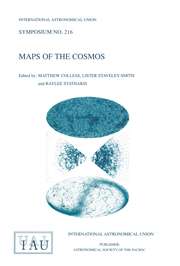No CrossRef data available.
Article contents
Correlation Functions for the Gravitational Force
Published online by Cambridge University Press: 14 August 2015
Abstract
Spatial and time correlations of the force acting on a star are derived for finite gravitational systems. It is shown that their behavior is qualitatively different than that for infinite mediums.
The dissolution time for a binary system is considered. We explain why Chandrasekhar's dissolution time differs from that given by Ambartsumian and Oort in that it does not depend on the velocities of the field stars. We show that the difference lies in the definition of what constitutes ‘relative change in velocity’ of the two stars in the binary. Indeed, using the general approach of Chandrasekhar and von Neumann (appropriately modified) we derive a velocity dependent dissolution time.
Information
- Type
- Part I/Spherical Systems
- Information
- Symposium - International Astronomical Union , Volume 69: Dynamics of Stellar Systems , 1975 , pp. 33 - 45
- Copyright
- Copyright © Reidel 1975

